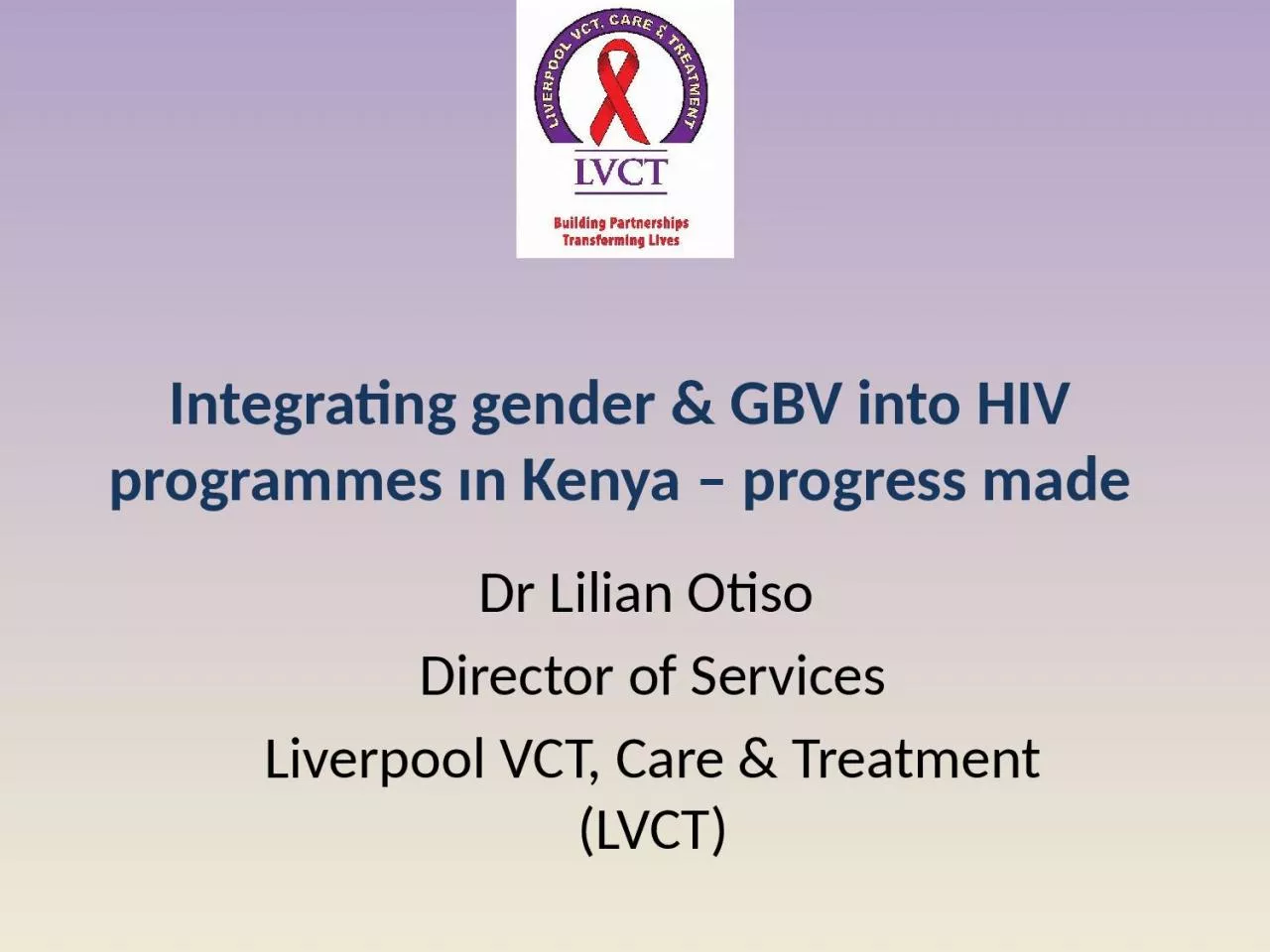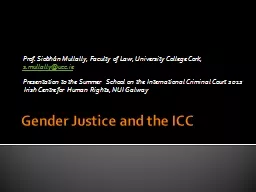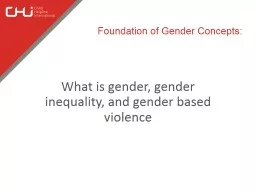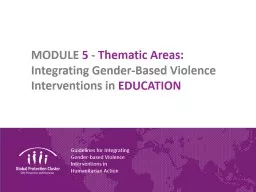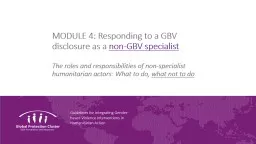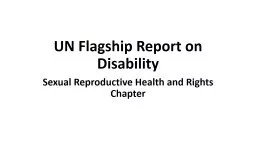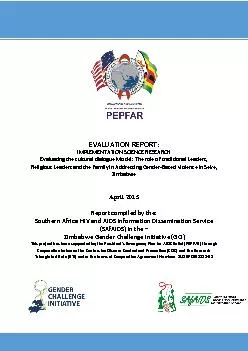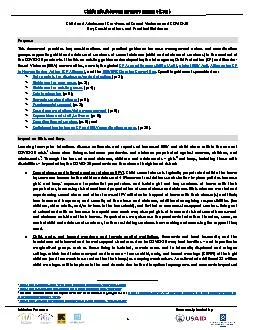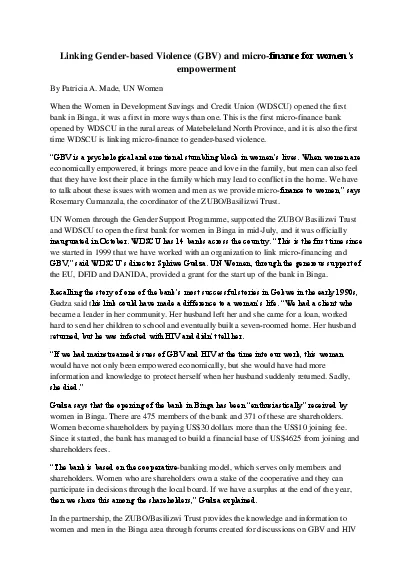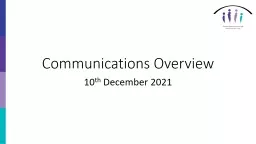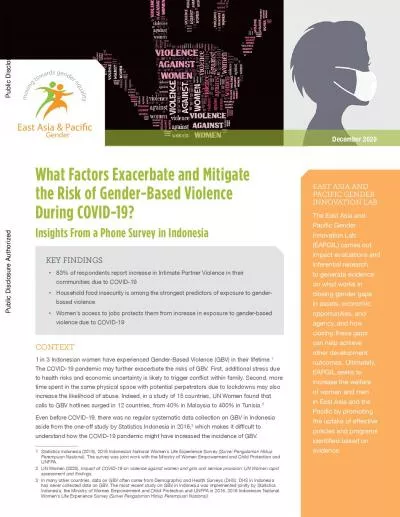PPT-Integrating gender & GBV
Author : eve | Published Date : 2024-02-09
into HIV programmes ın Kenya progress made Dr Lilian Otiso Director of Services Liverpool VCT Care amp Treatment LVCT Key issues why the drive towards integration
Presentation Embed Code
Download Presentation
Download Presentation The PPT/PDF document "Integrating gender & GBV" is the property of its rightful owner. Permission is granted to download and print the materials on this website for personal, non-commercial use only, and to display it on your personal computer provided you do not modify the materials and that you retain all copyright notices contained in the materials. By downloading content from our website, you accept the terms of this agreement.
Integrating gender & GBV: Transcript
Download Rules Of Document
"Integrating gender & GBV"The content belongs to its owner. You may download and print it for personal use, without modification, and keep all copyright notices. By downloading, you agree to these terms.
Related Documents

